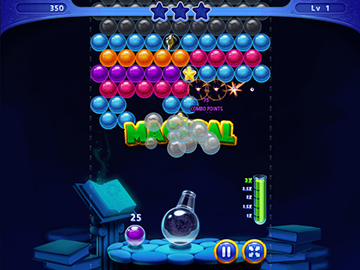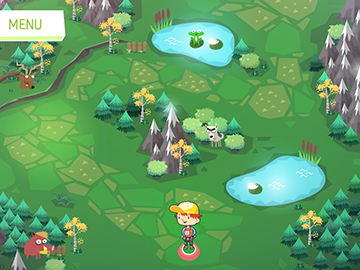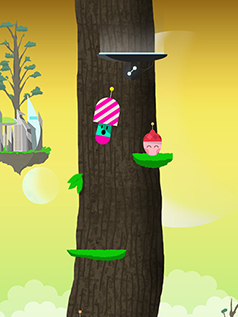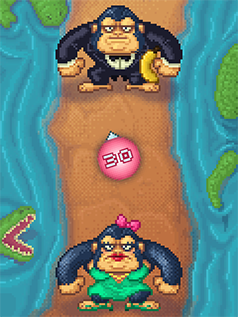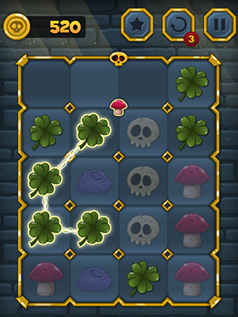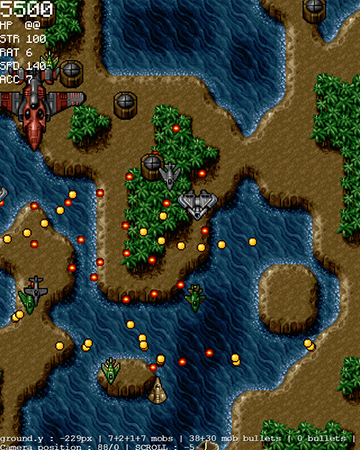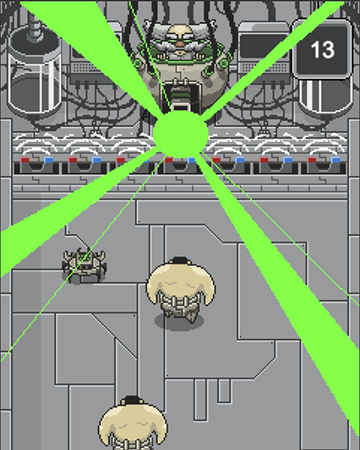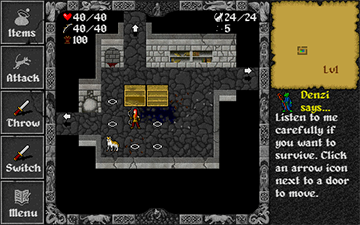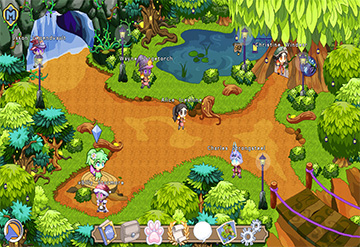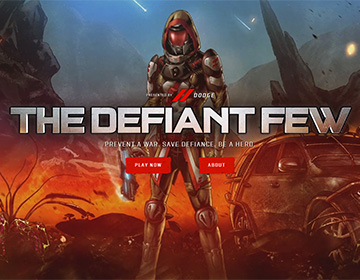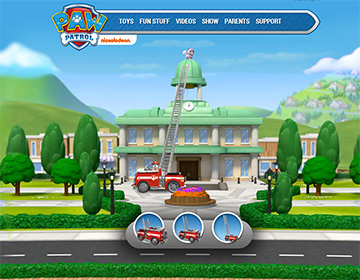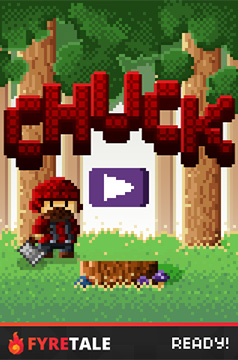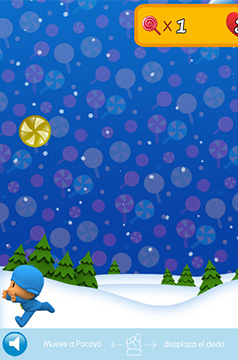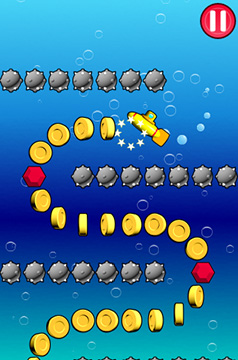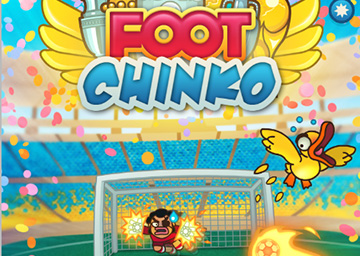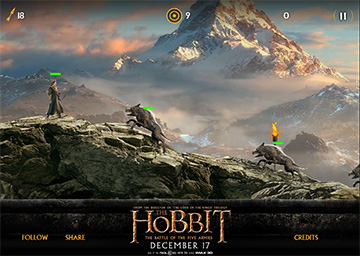README
Phaser - HTML5 Game Framework
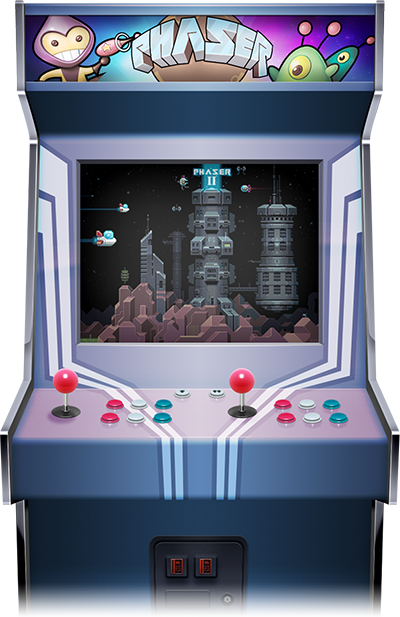
Phaser is a fast, free, and fun open source HTML5 game framework. It uses a custom build of Pixi.js for WebGL and Canvas rendering, and supports desktop and mobile web browsers. Games can be compiled to iOS, Android and native desktop apps via 3rd party tools. You can use JavaScript or TypeScript for development.
Along with the fantastic open source community, Phaser is actively developed and maintained by Photon Storm. As a result of rapid support, and a developer friendly API, Phaser is currently one of the most starred game frameworks on GitHub.
Thousands of developers worldwide use Phaser. From indies and multi-national digital agencies, to schools and Universities. Each creating their own incredible games.
Visit: The Phaser website and follow on Twitter (#phaserjs)
Learn: API Docs, Support Forum and StackOverflow
Code: 700+ Examples (source available in this repo)
Read: Weekly Phaser World Newsletter
Chat: Slack and IRC
Extend: With Phaser Plugins
Be awesome: Support the future of Phaser
Grab the source and join in the fun!
Contents
- What's New?
- Support Phaser
- Phaser World Newsletter
- Download Phaser
- Getting Started
- Building Phaser
- Games made with Phaser
- Requirements
- Road Map
- Change Log
- Lazer
- Contributing

17th June 2016
Phaser 2.5.0 is the latest release of Phaser, and represents another significant milestone in the evolution of the framework in 2016. It was previously released as 2.4.9. However we appreciate that we haven't been following the semver code strictly enough, and that this version (and most before it!) actually contains some significant MINOR level functionality, not just PATCH level. So we've bumped the version number accordingly.
As well as fixing a number of issues, there are some genuinely useful new features added in this release. Not least of which includes the new Weapons Plugin, making creating bullet pools a couple lines of code. Don't worry, it's also easy to exclude from custom builds too.
There are also some subtle but significant updates to Groups. The createMultiple method has had a nice overhaul, now able to take Arrays of image keys and frames. Group.align allows you to align the children of a Group in a grid formation, with the dimensions and spacing of the grid under your control.
Continuing from that theme: all Game Objects (such as Sprites and Text) now have a two new methods. alignIn allows you to easily align Game Objects within another Game Object or Rectangle. This is a great way to easily align a Sprite into the corner of the world, or another Sprite. To go with this is alignTo. It works in a similar way, but lets you align Game Objects next to each other.
It's small changes like this that reduce the overall code of your game, and let you focus on just building it quicker. Of course there are lots of other enhancements in this release, so be sure to check the Change Log to see what else is in store.
As always, keep you eyes on the Phaser web site, and subscribe to our weekly newsletter. You can also follow me on Twitter or chat to me in the Phaser Slack channel.
There are also now more ways than before to help support the development of Phaser. The uptake so far has been fantastic, but this is an on-going mission. Thank you to everyone who supports our development. Who shares our belief in the future of HTML5 gaming, and Phasers role in that.
Happy coding everyone! See you on the forums.
Cheers,
Rich - @photonstorm

Developing Phaser takes a lot of time, effort, and money. There are monthly running costs; such as the forum and site, which we maintain 100% ad-free. As well as countless hours of development time, community support, and assistance resolving issues. We do this out of our love for Phaser of course, but at the end of the day there are real tangible costs involved.
If you have found Phaser useful in your development life. Or have made income as a result of using it, and are in a position to support us financially, without causing any detriment to yourself, then please do. There are a number of ways:
- A monthly contribution via Patreon.
- A one-off donation via PayPal.
- Purchase any of our plugins or books.
- Companies can sponsor a release of Phaser, or an issue of our newsletter.
It all helps cover our running costs, and genuinely contributes towards future development.
Phaser Sponsors
Phaser is sponsored by the following great companies:

QICI Engine: A powerful one-stop integrated Phaser game editor

Zenva Academy: Online courses on Phaser, HTML5 and native app development
If you would like to sponsor Phaser then please get in touch. We have sponsorship options available on our GitHub repo, web site, and newsletter. All of which receive tens of thousands of eyeballs per day.
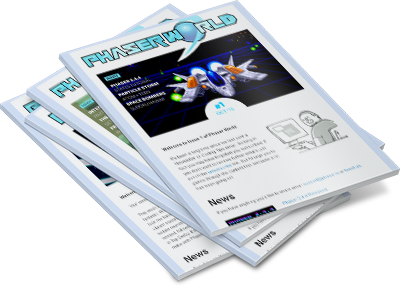
Every Friday we publish the Phaser World newsletter. It's packed full of the latest Phaser games, tutorials, videos, meet-ups, talks, and more. It also contains our weekly Development Progress updates.
Previous editions can found on our Back Issues page.
Phaser is hosted on Github. There are a number of ways to download it:
- Clone the git repository via https, ssh or with the Github Windows or Mac clients.
- Download as zip or tar.gz
- Download just the build files: phaser.js and phaser.min.js
- Checkout with svn
Bower / npm
Install via bower
bower install phaser
Install via npm
npm install phaser
Using Browserify? Please read this.
CDN
jsDelivr is a "super-fast CDN for developers". Include the following in your html:
<script src="//cdn.jsdelivr.net/phaser/2.5.0/phaser.js"></script>
or the minified version:
<script src="//cdn.jsdelivr.net/phaser/2.5.0/phaser.min.js"></script>
cdnjs.com also offers a free CDN service. They have all versions of Phaser and even the custom builds:
<script src="https://cdnjs.cloudflare.com/ajax/libs/phaser/2.5.0/phaser.js"></script>
Phaser Sandbox
If you'd like to try coding in Phaser right now, with nothing more than your web browser, then head over to the Phaser Sandbox. You'll find Quick Start templates, and a user-friendly editor filled with handy code-completion features.
License
Phaser is released under the MIT License.

Our Getting Started Guide will get you up to speed quickly. From setting up a web server, to picking an IDE. After which read our Making your first Game tutorial. Please work through this, no matter what your development experience, to learn how Phaser approaches things.
The single biggest Phaser resource is the Phaser web site. You'll find hundreds of tutorials, with new ones added every week. Subscribe to the Phaser World newsletter for a weekly links round-up.
Using TypeScript? Game From Scratch has a great series of tutorials covering that.
Prefer videos? Zenva have an excellent Phaser video course, with hours of great material.
Source Code Examples
Ever since we started Phaser we've been growing and expanding our extensive set of examples. Currently there are over 700 of them, with the full source code and assets available.
Browse the Phaser Examples, or clone the examples repo, and eat your heart out!
Interphase

Interphase is a programming book for Phaser developers of all skill levels.
With 400 pages of content you'll find detailed articles, game development "Making Of" guides and tutorials. All were written using the latest version of Phaser, so you won't be learning any out-dated tricks.
As well as the book you get all the source code, graphics and assets to go with it, and lots of extras too.
Phaser Editor - A complete Phaser Editor
Phaser Editor is a brand new Eclipse based editor that offers lots of built-in tools specifically for Phaser developers. Handy features include Smart code auto-completion, built-in web server, documentation search, asset management, texture atlas creator, audio sprite creator, asset previews and lots more.
Game Mechanic Explorer
The Game Mechanic Explorer is a great interactive way to learn how to develop specific game mechanics in Phaser. Well worth exploring once you've got your dev environment set-up.
Mighty Editor - Visual Game Editor
MightyEditor is a browser-based visual Phaser game editor. Create your maps with ease, position objects and share them in seconds. It also exports to native Phaser code. Excellent for quickly setting-up levels and scenes.
Phaser is provided ready compiled in the build folder of the repository. There are both plain and minified versions. The plain version is for use during development, and the minified version for production. You can also create your own builds.
Custom Builds
Phaser includes a grunt based build system, which allows you to strip out features you may not require, saving hundreds of KB in the process. Don't use any Sound in your game? Then exclude the entire sound system. Don't need Keyboard support? That can be excluded too.
As a result of this work the minimum build size of Phaser is now just 80KB minified and gzipped.
See the Creating a Custom Phaser Build tutorial for details.
Browserify / CJS
Phaser was never written to be modular. Everything exists under one single global namespace, and you cannot require selected parts of it into your builds. It expects 3 global vars to exist in order to work properly: Phaser, PIXI and p2. The following is one way of doing this:
window.PIXI = require('phaser/build/custom/pixi')
window.p2 = require('phaser/build/custom/p2')
window.Phaser = require('phaser/build/custom/phaser-split')
If you build a custom version of Phaser it will split the 3 core libs out into their own files, allowing you to require them as above.
We appreciate this is just a band-aid, and not a proper use of modules, but please understand it was never built to be used this way. You're trying to fit a square peg in a round browserify-shaped hole, so compromises have to be made. Please don't open GitHub issues about it as we've no intention of changing Phaser at this stage of its life. Full module based development is being undertaken in Lazer, the next iteration of the Phaser framework.
Webpack
Starting from Phaser 2.4.5 we now include a custom build for Webpack.
You need to add p2 as a dependency.
Webpack Config
var path = require('path');
var webpack = require('webpack');
var phaserModule = path.join(__dirname, '/node_modules/phaser/');
var phaser = path.join(phaserModule, 'build/custom/phaser-split.js'),
pixi = path.join(phaserModule, 'build/custom/pixi.js'),
p2 = path.join(phaserModule, 'build/custom/p2.js');
module.exports = {
...
module: {
loaders: [
{ test: /pixi.js/, loader: "script" },
]
},
resolve: {
alias: {
'phaser': phaser,
'pixi.js': pixi,
'p2': p2,
}
}
...
}
Main js file
require('pixi.js');
require('p2');
require('phaser');
Building from source
Should you wish to build Phaser from source you can take advantage of the provided Grunt scripts. Ensure you have the required packages by running npm install first.
Run grunt to perform a default build to the dist folder.
Thousands of games have been made in Phaser. From game jam entries, to titles by some of the largest entertainment brands in the world. Here is a tiny sample. You can find hundreds more on our web site.
Artwork copyright their respective owners.
We add new games to the Phaser site weekly, so be sure to send us yours when it's finished!
Phaser requires a web browser that supports the canvas tag. This includes Internet Explorer 9+, Firefox, Chrome, Safari and Opera on desktop. iOS Safari, Android Browser and Chrome for Android are supported on mobile.
While Phaser does its best to ensure a consistent cross-platform experience, always be aware of browser and device limitations. This is especially important with memory and GPU limitations on mobile, and legacy browser HTML5 compatibility.
IE9
If you need to support IE9 / Android 2.x and use P2 physics, then you must use the polyfill in the resources/IE9 Polyfill folder. If you don't use P2 (or don't care about IE9!) you can skip this.
JavaScript and TypeScript
Phaser is developed in ES5 JavaScript. We've made no assumptions about how you like to code, and were careful not to impose a strict structure upon you. You won't find Phaser split into modules, requiring a build step, or making you use a class / inheritance OOP approach. That doesn't mean you can't do so, it just means we don't force you to. It's your choice.
If you code with TypeScript there are comprehensive definition files in the typescript folder. They are for TypeScript 1.4+.
The majority of Phaser development is now taking place within the Lazer project. Lazer is the name for Phaser version 3. The Phaser 2 branch will still be supported, and issues fixed, but most roadmap features have been migrated over.
Lazer
Lazer is the next generation of the Phaser game framework, and was previously called Phaser 3. Using a completely ES6 base it is renderer agnostic, allowing for DOM, SVG, Canvas and WebGL rendering, across desktop and mobile web browsers.
Lazer is in active development, but is not yet ready for production use.
You can read all about the philosophy behind Lazer here or join the Google Group mailing list where progress reports are posted. You can also follow progress in the Phaser World newsletter.
Version 2.5.0 - "Four Kings" - 17th June 2016
New Features
- Phaser.Line.intersectsRectangle checks for intersection between a Line and a Rectangle, or any Rectangle-like object such as a Sprite or Body.
- Group.getClosestTo will return the child closest to the given point (thanks @Nuuf #2504)
- Group.getFurthestFrom will return the child farthest away from the given point (thanks @Nuuf #2504)
- Animation.reverse will reverse the currently playing animation direction (thanks @gotenxds #2505)
- Animation.reverseOnce will reverse the animation direction for the current, or next animation only (thanks @gotenxds #2505)
- The way the display list updates and Camera movements are handled has been completely revamped, which should result is significantly smoother motion when the Camera is following tweened or physics controlled sprites. The
Stage.postUpdatefunction is now vastly reduced in complexity. It takes control over updating the display list (callingupdateTransformon itself), rather than letting the Canvas or WebGL renderers do this. Because of this change, theCamera.updateTargetfunction uses the SpritesworldPositionproperty instead, which is now frame accurate (thanks @whig @Upperfoot @Whoisnt @hexus #2482) - Game Objects including Sprite, Image, Particle, TilemapLayer, Text, BitmapText and TileSprite have a new property called
data. This is an empty Object that Phaser will never touch internally, but your own code, or Phaser Plugins, can store Game Object specific data within it. This allows you to associate data with a Game Object without having to pollute or change its class shape. - TilemapLayers will now collide properly when they have a position that isn't set to 0x0. For example if you're stitching together several maps, one after the other, and manually adjust their
scrollX/Yproperties (thanks @Upperfoot #2522) - There are a bunch of new Phaser consts available to help with setting the angle of a Game Object. They are
Phaser.ANGLE_UP,ANGLE_DOWN,ANGLE_LEFT,ANGLE_RIGHT,ANGLE_NORTH_EAST,ANGLE_NORTH_WEST,ANGLE_SOUTH_EASTandANGLE_SOUTH_WEST. - Math.between will return a value between the given
minandmaxvalues. - InputHandler.dragDistanceThreshold gives you more fine control over when a Sprite Drag event will start. It allows you to specify a distance, in pixels, that the pointer must have moved before the drag will begin.
- InputHandler.dragTimeThreshold gives you more fine control over when a Sprite Drag event will start. It allows you to specify a time, in ms that the pointer must have been held down for, before the drag will begin.
- InputHandler.downPoint is a new Point object that contains the coordinates of the Pointer when it was first pressed down on the Sprite.
- There are two new Phaser consts available, for help with orientation of games or Game Objects. They are
Phaser.HORIZONTAL,Phaser.VERTICAL,Phaser.LANDSCAPEandPhaser.PORTRAIT. - InputHandler.dragStopBlocksInputUp is a boolean that allows you to control what happens with the input events. If
false(the default) then both theonInputUpandonDragStopevents will get dispatched when a Sprite stops being dragged. Iftruethen only theonDragStopevent is dispatched, and theonInputUpis skipped. - Group.inputEnableChildren is a new property. If set to
truewill automatically callinputEnabled = trueon any children added to, or created by, the Group. - PIXI.DisplayObjectContainer.ignoreChildInput is a new property. If
truethen the children will not be considered as valid for Input events. Because this has been applied toDisplayObjectContainerit means it's available in Group, Sprite and any other display level object. Using this boolean you can disable input events for all children in an entire Group, without having to iterate anything or deep-set flags. - InputHandler._pointerOverHandler and _pointerOutHandler have new arguments
silent- iftruethen they will not dispatch any Signals from the parent Sprite. - Pointer.interactiveCandidates is a new Array that is erased and re-populated every time this Pointer is updated. It contains references to all of the Game Objects that were considered as being valid for processing by this Pointer, during the most recent update. To be valid they must have suitable a
priorityID, be Input enabled, be visible and actually have the Pointer over them. You can check the contents of this array in events such asonInputDown, but beware: it is reset every update. - Pointer.swapTarget allows you to change the
Pointer.targetObjectobject to be the one provided. This allows you to have fine-grained control over which object the Pointer is targeting. - Input.setInteractiveCandidateHandler allows you to add a callback that is fired every time
Pointer.processInteractiveObjectsis called. The purpose ofprocessInteractiveObjectsis to work out which Game Object the Pointer is going to interact with. It works by polling all of the valid game objects, and then slowly discounting those that don't meet the criteria (i.e. they aren't under the Pointer, are disabled, invisible, etc). Eventually a short-list of 'candidates' is created. These are all of the Game Objects which are valid for input and overlap with the Pointer. If you need fine-grained control over which of the items is selected then you can use this callback to do so. The callback will be sent 3 parameters: 1) A reference to the Phaser.Pointer object that is processing the Items. 2) An array containing all potential interactive candidates. This is an array ofInputHandlerobjects, not Sprites. 3) The current 'favorite' candidate, based on its priorityID and position in the display list. Your callback MUST return one of the candidates sent to it. - Group.onChildInputDown is a new Signal that you can listen to. It will be dispatched whenever any immediate child of the Group emits an
onInputDownsignal itself. This allows you to listen for a Signal from the Group, rather than every Sprite within it. - Group.onChildInputUp is a new Signal that you can listen to. It will be dispatched whenever any immediate child of the Group emits an
onInputUpsignal itself. This allows you to listen for a Signal from the Group, rather than every Sprite within it. - Group.onChildInputOver is a new Signal that you can listen to. It will be dispatched whenever any immediate child of the Group emits an
onInputOversignal itself. This allows you to listen for a Signal from the Group, rather than every Sprite within it. - Group.onChildInputOut is a new Signal that you can listen to. It will be dispatched whenever any immediate child of the Group emits an
onInputOutsignal itself. This allows you to listen for a Signal from the Group, rather than every Sprite within it. - Phaser.Weapon is a brand new plugin that provides the ability to easily create a bullet pool and manager. Weapons fire Phaser.Bullet objects, which are essentially Sprites with a few extra properties. The Bullets are enabled for Arcade Physics. They do not currently work with P2 Physics. The Bullets are created inside of
Weapon.bullets, which is a Phaser.Group instance. Anything you can usually do with a Group, such as move it around the display list, iterate it, etc can be done to the bullets Group too. Bullets can have textures and even animations. You can control the speed at which they are fired, the firing rate, the firing angle, and even set things like gravity for them. Please see the Documentation for more details, or view the Weapon examples in the Examples repo. - BitmapData.smoothProperty is a new property that holds the string based prefix needed to set image scaling on the BitmapData context.
- BitmapData.copyTransform allows you to draw a Game Object to the BitmapData, using its
worldTransformproperty to control the location, scaling and rotation of the object. You can optionally provide - BitmapData.drawGroup now uses the new
copyTransformmethod, to provide for far more accurate results. Previously nested Game Objects wouldn't render correctly, nor would Sprites added viaaddChildto another Sprite. BitmapText objects also rendered without rotation taken into account, and the Sprites smoothing property was ignored. All of these things are now covered by the new drawGroup method, which also handles full deep iteration down the display list. - Added the following new constants:
Phaser.TOP_LEFT,Phaser.TOP_CENTER,Phaser.TOP_RIGHT,Phaser.LEFT_TOP,Phaser.LEFT_CENTER,Phaser.LEFT_BOTTOM,Phaser.CENTER,Phaser.RIGHT_TOP,Phaser.RIGHT_CENTER,Phaser.RIGHT_BOTTOM,Phaser.BOTTOM_LEFT,Phaser.BOTTOM_CENTERandPhaser.BOTTOM_RIGHT. - Rectangle.getPoint is a new method that returns a point based on the given position constant, such as
Phaser.BOTTOM_LEFT. It returns the same result as callingRectangle.bottomLeft(etc) but unlike those getters you are able to provide your own Point object. - The Game Object Bounds component has been updated to include two new properties:
centerXandcenterY. This means you can, for example, now get the horizontal center of a Sprite by calledSprite.centerX. These properties are also setters, so you can position the Game Objects, and it will take scale and anchor into consideration. - All Game Objects with the Bounds component; which includes Sprites, Images, Text, BitmapText, TileSprites and anything that extend these, now have the new method
alignIn. It allows you to align the Game Object within another Game Object, or a Rectangle. You can specify one of 9 positions which are the new position constants such as:Phaser.TOP_LEFTorPhaser.CENTER(see above for the complete list). The Game Objects are positioned based on their Bounds, which takes rotation, scaling and anchor into consideration. You can easily place Sprites into the corners of the screen, or game world, or align them within other Sprites, using this method. - All Game Objects with the Bounds component; which includes Sprites, Images, Text, BitmapText, TileSprites and anything that extend these, now have the new method
alignTo. It allows you to align a Game Object to the side of another Game Object, or a Rectangle. You can specify one of 11 positions which are the new position constants such as:Phaser.TOP_LEFTorPhaser.LEFT_BOTTOM(see above for the complete list). The Game Objects are positioned based on their Bounds, which takes rotation, scaling and anchor into consideration. You can easily align Sprites next to other Sprites using this method. - Group.align is a new method that allows you to layout all the children of the Group in a grid formation. You can specify the dimensions of the grid, including the width, height and cell size. You can also control where children are positioned within each grid cell. The grid width and height values can also be set to -1, making them fluid, so the grid expands until all children are aligned. Finally an optional child index argument can be set. This is a great way to quickly and comprehensively align Group children, and has lots of use cases.
- The Arcade Physics Body has two new experimental methods:
moveToandmoveFrom. These allow you to move a Physics Body for a given distance, or duration, after which it will stop and emit theonMoveCompleteSignal. It is still capable of colliding and rebounding like usual.
Updates
- TypeScript definitions fixes and updates (thanks @wingyplus @monagames @marineorganism @obamor @BaroqueEngine @danzel)
- Docs typo fixes (thanks @seanirby @johnrees)
- The TypeScript defs ambient declaration has been updated to make it compatible with the SystemJS loader (thanks @monagames)
- You can no longer intersect check a Body against itself (thanks @VitaZheltyakov #2514)
- The mobile template has been updated (thanks @cryptographer #2518)
- Video.onComplete wouldn't fire on iOS if the user hit the 'Done' button before the video had finished playing. It now uses the
webkitendfullscreenevent to detect this, and dispatches theonCompletesignal should that event fire (thanks @kelu-smiley #2498) - Sound.addMarker now has a default value for the
durationargument (1 second) to avoid the DOM Exception 11 error if you accidentally miss it out (thanks @mari8i #2508) - Removed the
Stage.updateTransformcalls from the main game loop, because it happens automatically as part ofGame.updateLogicanyway, so was duplicating the workload for no reason. - TilemapLayer.postUpdate could potentially be called several times per frame (depending on device frame rate), which would cause multiple texture redraws, even though only the last texture is used during rendering. This has now been modified so that the local TilemapLayer canvas is only re-rendered once per frame, during the rendering phase, and not during the logic update phase.
- Group.preUpdate now iterate through the display list forwards, instead of in reverse, to match it with how
Stage.preUpdateworks. - Stage.postUpdate is now a lot smaller, with no conditional branching if there is a Camera Target or not.
- Within RequestAnimationFrame both
updateRAFandupdateSetTimeoutnow only callgame.updateifisRunningis true. This should avoid asynchronous Game destroy errors under environments like Angular (thanks @flogvit #2521) - Group.removeAll has a new argument
destroyTexturewhich allows you to optionally destroy the BaseTexture of each child, as it is removed from the Group (thanks @stoneman1 #2487) - PluginManager.remove has a new argument
destroy(defaults totrue) which will let you optionally called thedestroymethod of the Plugin being removed. - Cache.getJSON used to incorrectly bring back a deep-copy of the Phaser.Utils object, instead of just a clone of the JSON object requested (thanks @drhayes #2524 #2526)
- The
DisplayObject.renderOrderIDused to run in reverse. I.e. in a display list with 10 sprites on it, the first sprite (at the bottom of the list, rendering behind all the others) would have arenderOrderIDof 9, where-as the top-most sprite, rendering above all others, would have arenderOrderIDof 0. While this didn't cause any side-effects internally, it's arguably illogical. So the process has been reversed, andrenderOrderIDs are now accumulative, starting at zero each frame, and increasing as it iterates down the display list. So the higher the ID, the more "on-top" of the output the object is. InputHandler.validForInputandPointer.processInteractiveObjectshave been updated to reflect the newrenderOrderIDsequence (see above).- Group.add has a new optional argument
indexwhich controls the index within the group to insert the child to. Where 0 is the bottom of the Group. - Group.addAt has been refactored to be a simple call to
Group.add, removing lots of duplicate code in the process. - Group.create has a new optional argument
indexwhich controls the index within the group to insert the child to. Where 0 is the bottom of the Group. It also now makes proper use ofGroup.add, cutting down on more duplicate code. - Group.createMultiple now returns an Array containing references to all of the children that the method created.
- Cache.getJSON will now return an Array if the
keyyou provided points to an array instead of an Object (thanks @drhayes #2552 #2551) - Phaser.Matrix if passed a 0 value would consider it falsy, and replace it with the default by mistake. It now checks if the arguments are
undefinedornulland only then sets the defaults (thanks mmcs) - Group.createMultiple can now accept Arrays for both the
keyandframearguments. This allows you to create multiple sprites using each key and/or frame in the arrays, which is a great and quick way to build diverse Groups. See the JSDocs for complete details and code examples. - The Game Object Bounds component has been updated so that it now provides setters for all of the properties, as well as getters. Previously
Sprite.left,Sprite.right,Sprite.topandSprite.bottomwere read-only, but they are now available to be set as well, and take into consideration the anchor and scale of the Game Objects.
Bug Fixes
- Arcade Physics Body incorrectly positioned if the Sprite had a negative scale (see http://www.html5gamedevs.com/topic/22695-247-248-body-anchoring-any-migration-tips/) (thanks @SBCGames @icameron @Nuuf @EvolViper #2488 #2490)
- InputHandler.checkPointerDown had an incorrect single pipe character |, instead of an OR check ||, and an
isDowncheck, causing Button Over events to fail (thanks @pengchuan #2486) - BitmapText objects with lines greater than
maxWidthnow handle alignment values correctly, causing them to properly center align (thanks @kevinleedrum #2499 @crippledcactus #2496) - Text has a new private method
measureLinewhich is used to calculate the final Text line length, after factoring in color stops and other style changes. This should prevent characters from becoming truncated (thanks @TadejZupancic #2519 #2512) - Sometimes the browser would cause a race condition where any connected Game Pads were being detected before the callback had a chance to be established. Also sometimes the rawPad references would become stale, and are now checked constantly (thanks @cwleonard #2471)
- Sound.isPlaying was set to false when doing an audio loop, but never set back to true if it's a sound not using a marker (thanks @TheJasonReynolds #2529)
- Phaser.Rectangle.aabb would fail if the Rectangles used negative offsets. It now calculates the bounds accurately (thanks @fillmoreb #2545)
- The
DisplayObject.worldRotationvalue didn't sign thewt.cvalue correctly, meaning the rotation would be wrong. - The
DisplayObject.worldScalevalue didn't multiply the local objects scale into the calculation, meaning the value wasn't a true representation of the objects world scale.
For changes in previous releases please see the extensive Version History.
The Contributors Guide contains full details on how to help with Phaser development. The main points are:
Found a bug? Report it on GitHub Issues and include a code sample.
Pull Requests should only be made against the
devbranch. Never againstmaster.Before submitting a Pull Request run your code through JSHint using our config.
Before contributing read the code of conduct.
Written something cool in Phaser? Please tell us about it in the forum, or email support@phaser.io


Phaser is a Photon Storm production.
Created by Richard Davey. Powered by coffee, anime, pixels and love.
The Phaser logo and characters are © 2016 Photon Storm Limited.
All rights reserved.
"Above all, video games are meant to be just one thing: fun. Fun for everyone." - Satoru Iwata







